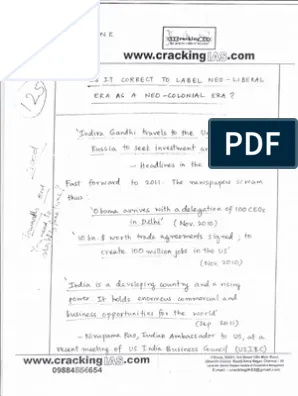- Home
- Prelims
- Mains
- Current Affairs
- Study Materials
- Test Series
- Classroom Coaching
- Online Coaching
- CSAT Aptitude
- Ethics & Essay
 Latest News
Latest News
What are Biosimilars?
In broad categorization, most medicines can be divided into two segments: drugs and biologics. Drugs are small-molecule chemical compounds. Since they are synthesized from chemicals they do have the same effect all the time. A generic drug is bioequivalent to the branded product, generic drugs are same as an existing approved drug in terms of dosage form, safety quality, and performance characteristics.
On the other hand, biologics are large and complex(200-1000 times bigger than drugs) molecules. Unlike drugs, biologics are prepared within the living cells such as engineered bacteria. The key difference in biologics and drugs is that since biologics are prepared in living cells, they are less stable in comparison to the drugs and need special storage and handling process. Also, there is no surety that two doses of such medicines will be identical as minor changes keep coming due to cell errors.
Once the patent period of biologics is over various companies resort to releasing similar biologics with the approval of original manufacturer. Such follow-on biologics are called biosimilars. The key difference is the cost. Also, Unlike generic medicines in which are identical to the reference drug, biosimilars will not be an identical copy of the reference biologics. Biosimilars can only be highly similar to the reference product.
Biologics & biosimilar have revolutionized the treatment of chronic illnesses such as cancer, a neurological disorder.
- Biosimilars are similar copies of a class of drugs called biologicals. Biological medicines have created new opportunities to treat diseases, including cancers, autoimmune conditions and diabetes, to name a few.
- As their name suggests, biologics are made with biological materials, including materials from humans, plants, animals, bacteria, and other microorganisms; they go through a rigorous, tightly controlled manufacturing process and tend to be patented.
- Biologics are highly complex molecules that are grown rather than synthesized and have an inherent level of micro-variability. Because of this variability in the structure of reference biologics, biosimilars cannot be exact copies. Instead, biosimilars mimic the active ingredient in the reference biologic.
- A biosimilar has a structure that is highly similar to, but not exactly the same, as a brand name biologic. A biosimilar behaves in much the same way, so that there are “no meaningful differences” between it and its brand name biologic. This means that the biosimilar is also considered as safe and effective as the biologic.
|
|
Biosimilars |
Generics |
|
Nature of the Product |
|
|
|
Regulatory Approval |
|
|
|
Manufacturing Process |
|
|
|
Market Dynamics |
|
|
India and Global Biosimilar Market
- Pioneer in the Global Biosimilars Market: India was the first country to approve a biosimilars product for Hepatitis B.
- Today, there are 98 approved biosimilars in India, with at least 50 in the market, the most in any country.
- Many India-made biosimilars have been approved in markets like the US.
- Rapid Growth of the Indian Biosimilars Market: The Indian biosimilars market was valued at $349 million in 2022 and is estimated to expand at a growth rate of 25.2 per cent per annum from 2022 to 2030 to reach $2,108 million by 2030.
- Expanding Scope: By 2030, biologic products worth some $170 billion will lose patent protection.
- This will open a window of opportunity for Indian biopharma to launch more biosimilar products.
- Regulatory Framework in India: In India, biopharmaceuticals and generic medicines are classified as drugs and are regulated by the Central Drugs Standard Control Organization (CDSCO) under the Drugs and Cosmetics Act, 1940.
|
Intellectual Property and Patents in Pharmaceuticals
|
Challenges Faced By India With Respect to Biosimilars
- Patent Evergreening: Patent evergreening is one of the significant barriers faced by Indian biosimilar manufacturers.
- Example: The multinational Roche extended the exclusivity of trastuzumab (Herceptin), a biologic used to treat breast cancer, by introducing a subcutaneous version just as the original patent was expiring.
- Regulatory Challenges: Biosimilars, unlike generic drugs, are derived from living organisms and require rigorous clinical trials to demonstrate similarity in quality, safety, and efficacy.
- The complexity of biologics leads to inherent variability, making approval and market entry more challenging.
- Example: The biosimilar of trastuzumab (used in breast cancer treatment) took several years to gain approval, affecting its timely entry into the market.
- Limited Testing Facilities: India currently faces a significant challenge with limited testing facilities capable of conducting the extensive bio-similarity assessments required for biosimilars.
- Adoption Hesitancy: There is often a lack of awareness among healthcare professionals and patients regarding the safety and efficacy of biosimilars, leading to hesitancy in adoption.
- This lack of understanding can limit patient access to potentially cost-effective treatment options.
- Market Competition: Intense competition from established global players in the biosimilars market can make it challenging for Indian manufacturers to secure market share.
- India holds only a 3% share of the global biosimilar market.
- Intellectual Property Challenges: Navigating the complexities of intellectual property laws and potential litigation can be daunting for Indian biosimilar companies.
- Example: Reliance Life Sciences (RLS) faced legal action from Roche regarding its biosimilar trastuzumab, used for treating breast cancer.
- The Delhi High Court in 2015 expressed concerns about Roche’s motives, suggesting the lawsuit aimed to stifle competition.
|
Patent Regime in India
|
Initiatives by the Government for India’s Biopharmaceutical Development
- National Biopharma Mission
- Initiative Overview: Under the Make in India initiative, the National Biopharma Mission (NBM) has been launched as an industry-academia collaborative mission, managed by the Biotechnology Industry Research Assistance Council (BIRAC).
- Funding and Scope: This $250 million mission is co-funded by the World Bank and aims to accelerate the development of biopharmaceuticals.
- Support for Organisations: The NBM supports nearly 150 organisations and 300 micro, small, and medium enterprises (MSMEs) in the biopharmaceutical sector.
- India’s Patent Legislation: Particularly Section 3(d) of the Patents Act, 1970, aims to prevent “evergreening” by rejecting patents for small innovations that lack substantive improvement.
- Example: In Novartis vs Union of India, the patent application of Novartis for the cancer drug Glivec (imatinib), used to treat leukaemia, was rejected as it did not show significant technical advancement.
- This set a strong precedent against evergreening practices.
- Section 3(e) of the Act restricts patenting mixtures of known compounds unless a synergistic effect is proven, and Section 3(i) prevents patents on treatment methods.
- Guidelines on Similar Biologics: Biosimilars are also known as Similar Biologics.
- The Guidelines on Similar Biologics are a comprehensive policy document outlining the regulatory pathway for approving similar biologics in India. It is developed collaboratively by the Central Drugs Standard Control Organization (CDSCO) and the Department of Biotechnology (DBT).
Road ahead
- Strengthen Patent Laws: Reinforce Section 3(d) of India’s Patents Act, which prevents patents for minor modifications.
- Encourage Compulsory Licensing: In cases of high public health impact, leverage compulsory licensing provisions to make essential biosimilars more accessible and reduce monopolistic control.
- Expand Clinical Trial Capabilities: Increase investment in domestic clinical trial infrastructure.
- Providing grants and incentives for companies to conduct biosimilar trials could make these trials more feasible and accessible.
- Re-establishment of Intellectual Property Appellate Board (IPAB): for early disposal of patent dispute cases.
- The Intellectual Property Appellate Board (IPAB) was abolished in April 2021 with the passing of the Tribunals Reforms (Rationalization and Conditions of Service) Ordinance, 2021.
- Implement Quality Management Systems: Standardise production protocols to ensure consistent biosimilar quality.
- The National Institute of Biologicals is an autonomous institute under India’s Ministry of Health and Family Welfare for theQuality Control of Biologicals.
- It can help set up quality control standards and monitoring.
- Encourage Venture Capital in Biopharma: Implement tax breaks or risk-sharing mechanisms to attract more private investment in the biosimilar sector, especially targeting smaller players with high growth potential.
- Advocate for Fair Intellectual Policies (IP): Through forums like World Trade Organization (WTO) and World Intellectual Property Organization (WIPO), India could advocate for fairer global IP practices, reducing litigation risks for biosimilars.
- Learning from Global Experiences: The European Medicines Agency’s 2005 biosimilar guidelines offer a streamlined approval process, resulting in substantial Biosimilar adoption in Germany, the UK, and Nordic countries, which has led to significant cost savings.
- In the United States, a legal framework for approving biosimilars was established in 2009, via the Biologics Price Competition and Innovation Act of 2009 (BPCI Act). The BPCI Act establishes an abbreviated approval pathway for biosimilars.
India’s pharmaceutical and biotech industry requires strong government support and robust patent laws to successfully capture the biologics and biosimilars market.










 General Studies
General Studies